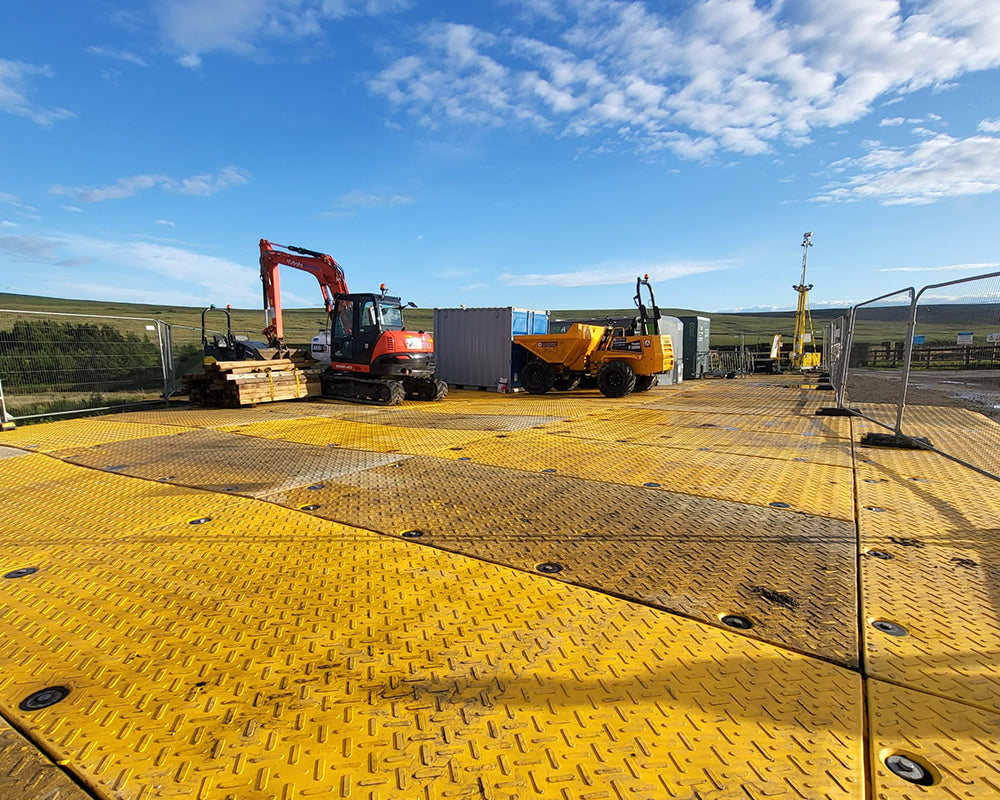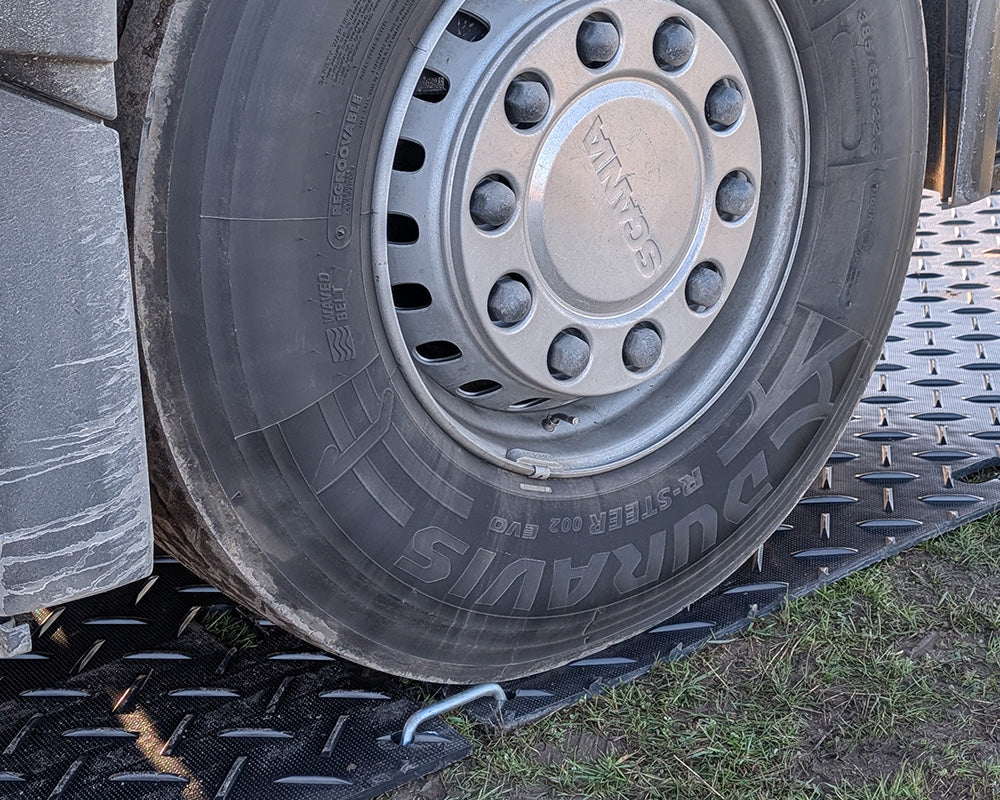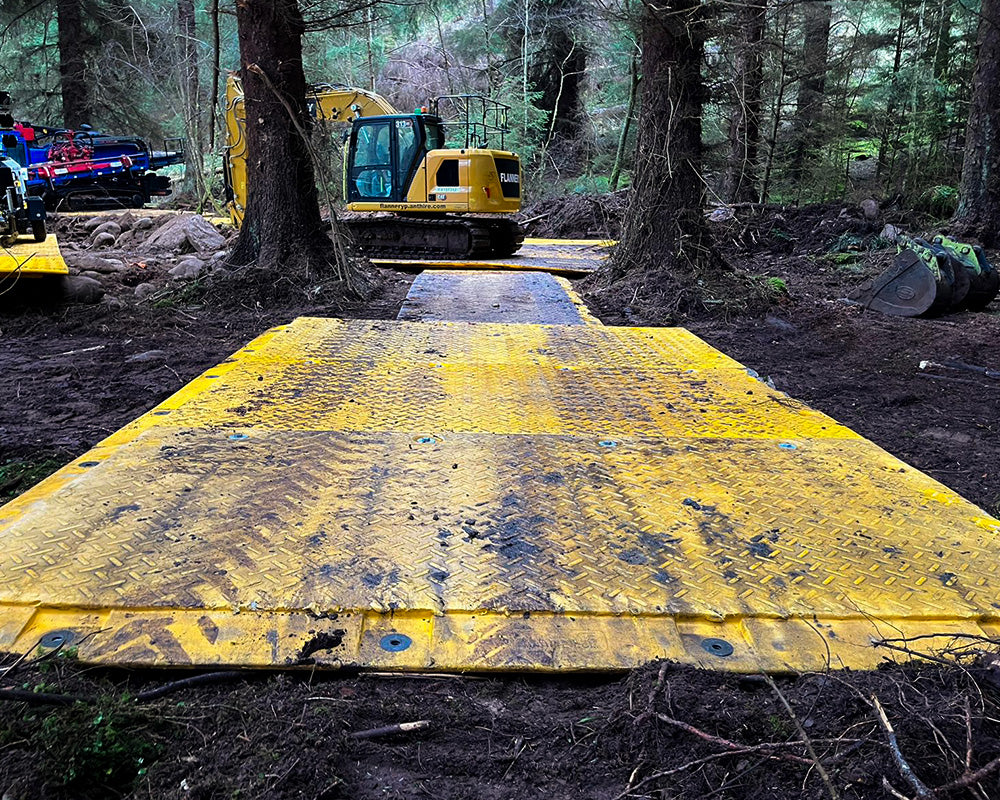The Truth About Weight Loading
Here’s the reality: ground protection mats don’t magically hold up vehicles by themselves.
Any weight loading figure refers to the compressive strength of the mat in isolation, usually tested under controlled conditions. But in the real world, a mat is only as good as the ground it’s laid on. If the surface underneath is soft, saturated, or unstable, no mat, no matter how strong, will stop the ground from failing beneath it. Mats are not bridges. They don’t create structure where there’s none. Instead, they spread the load across a wider area, helping to reduce rutting, bogging down, and wheel slip.
In simple terms:
If the ground can’t support the vehicle weight on its own, it won’t with mats either.

Why Weight Loading Figures Can Be Misleading
Weight ratings like “120 tonnes” might look impressive on a spec sheet, but they often create a false sense of security. These figures are usually:
- Based on tests on firm, dry ground
- Measuring only the mat’s compressive capacity
- Not factoring in ground pressure or surface variability
- Not accounting for point loads (such as outriggers or narrow tyres)
So while they’re a useful guide, they can’t be taken as guarantees and shouldn’t be used in isolation to determine suitability.
This is where our team makes the difference. We’ll ask the right questions, assess your needs, and help you find a matting solution that works on site, not just on paper.

Mats Are Load Spreaders, Not Load Bearers
Ground protection mats are designed to distribute weight, not to carry it unsupported.
By increasing the surface area beneath each tyre or track, they reduce ground pressure and lower the risk of failure. Think of them as snowshoes for heavy equipment. They help you stay on top of the ground rather than sinking in.
But they only work if the ground can bear some of the weight in the first place. That is why we will never make inflated claims or unrealistic promises. We give you the facts so you can plan with confidence.

Matching the Mat to the Ground
Bigger mats with thicker cores, like XtremeMat or UltraTrack Pro, offer higher rigidity and spread the load more effectively. For lighter traffic or pedestrian use, options like FastCover or EnviroMat are more suitable. The best choice always depends on the vehicle type and the terrain.
If you’re operating over boggy ground, we may recommend pre-consolidation, layering, or phased installation. For extreme loads, like cranes or tracked plant, we’ll guide you toward mats engineered for those demands, ensuring safe usage that protects the ground and your equipment.



